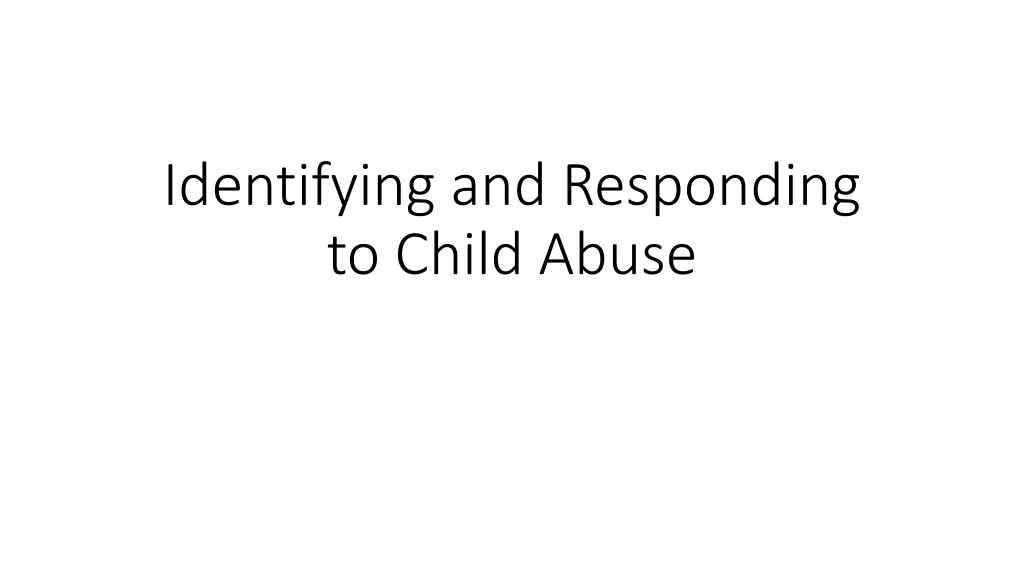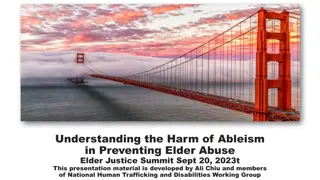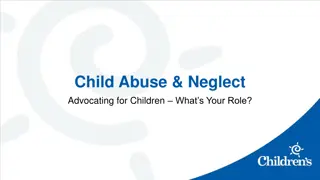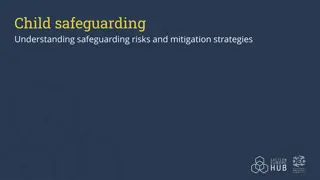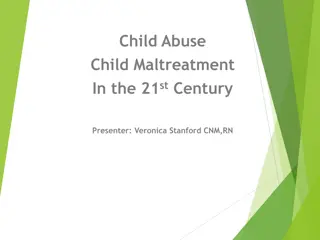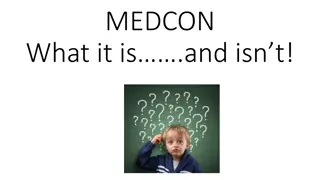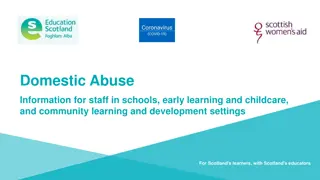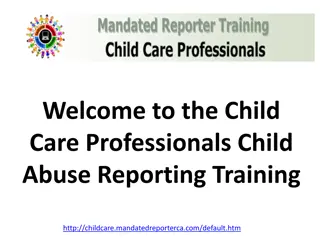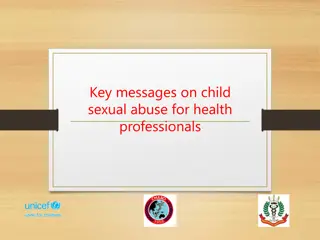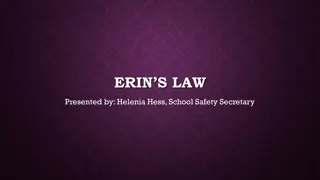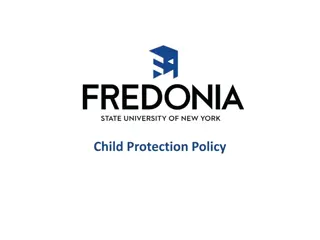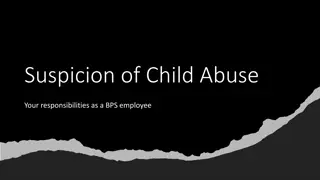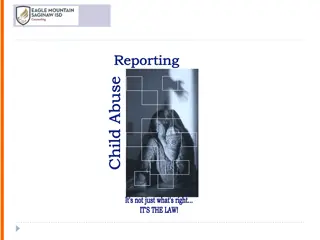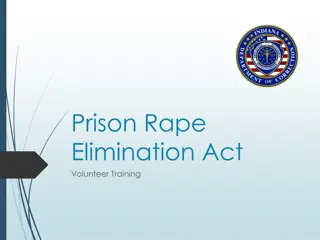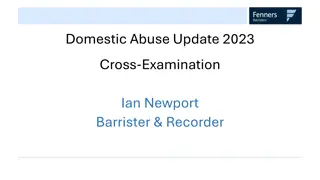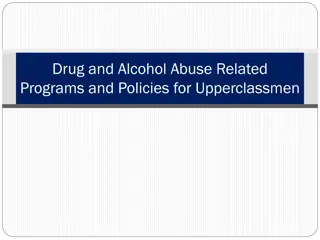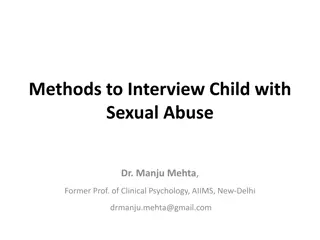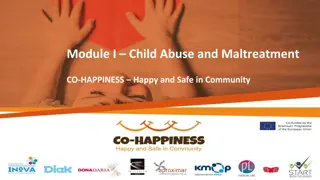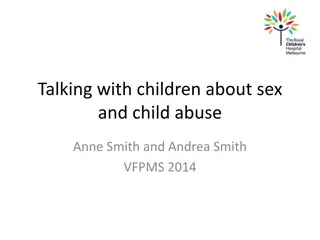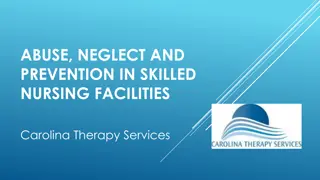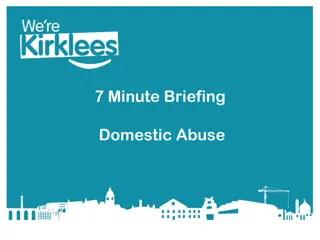Understanding and Responding to Child Abuse: International Perspectives and Recommendations
Within the international context, child protection is a fundamental concern guided by principles such as the UNCRC and the European Commission's Ten Principles. The EU has also enacted directives to combat various forms of child abuse, including sexual exploitation and trafficking. In England, child protection statistics reveal the prevalence of neglect, emotional abuse, physical abuse, and sexual abuse. Recognizing and addressing child abuse require a multi-faceted approach encompassing prevention, support for families, training for professionals, and robust reporting mechanisms.
Download Presentation

Please find below an Image/Link to download the presentation.
The content on the website is provided AS IS for your information and personal use only. It may not be sold, licensed, or shared on other websites without obtaining consent from the author. Download presentation by click this link. If you encounter any issues during the download, it is possible that the publisher has removed the file from their server.
E N D
Presentation Transcript
Identifying and Responding to Child Abuse
Responding to Child Abuse - International Context UNCRC Article 3 (best interests of the child) The best interests of the child must be a top priority in all decisions and actions that affect children. Article 9 (separation from parents) Children must not be separated from their parents against their will unless it is in their best interests (for example, if a parent is hurting or neglecting a child). Children whose parents have separated have the right to stay in contact with both parents, unless this could cause them harm. Article 19 (protection from violence, abuse and neglect) Governments must do all they can to ensure that children are protected from all forms of violence, abuse, neglect and bad treatment by their parents or anyone else who looks after them Article 20 (children unable to live with their family) If a child cannot be looked after by their immediate family, the government must give them special protection and assistance. This includes making sure the child is provided with alternative care that is continuous and respects the child s culture, language and religion.
European Commissions Ten Principles of Child Protection 1. every child is recognised, respected and protected as a rights holder, with non-negotiable rights to protection 2. no child is discriminated against 3. child protection systems include prevention measures 4. families are supported in their role as primary caregivers 5. society is aware and supportive of the child's right to freedom from all forms of violence 6. child protection systems ensure adequate care, including: standards, indicators and systems of monitoring and evaluation child safeguarding policies and reporting mechanisms for organisations working with children certification and training for all professionals working for and with children. 7. child protection systems have transnational and cross-border mechanisms in place 8. no child should be without the support and protection of a legal guardian or other responsible adult or competent public body at any time 9. training on identification of risks is given to teachers, health sector professionals, and social workers 10. safe, well-publicised, confidential and accessible reporting mechanisms are in place
EU Directives on Child Abuse Two Major EU Directives (focus on issues with international aspect): Directive 2011/92/EU of the European Parliament and of the Council of 13 December 2011 on combating the sexual abuse and sexual exploitation of children and child pornography Directive 2011/36/EU of the European Parliament and of the Council of 5 April 2011 on preventing and combating trafficking in human beings and protecting its victims
Child Protection Statistics in England Neglect 32,520 Emotional Abuse 23,880 68,770 child protection plans started 32,050 children became Looked After (15,990 by voluntary agreement) 407,380 assessments where child was judged to be in need 655,630 referrals made to social services in 2017/18 Physical Abuse 5,840 Multiple Forms 3,580 Sexual Abuse 2,960
Definitions Neglectis the persistent failure to meet a child s basic physical and/or psychological needs, likely to result in the serious impairment of the child s health or development. Neglect may occur during pregnancy as a result of maternal substance abuse. Physical abuse may involve hitting, shaking, throwing, poisoning, burning or scalding, drowning, suffocating or otherwise causing physical harm to a child. Physical harm may also be caused when a parent or carer fabricates the symptoms of, or deliberately induces, illness in a child. Emotional abuse is the persistent emotional maltreatment of a child such as to cause severe and persistent adverse effects on the child s emotional development. It may involve seeing or hearing the ill-treatment of another. Some level of emotional abuse is involved in all types of maltreatment of a child, though it may occur alone. Sexual abuse involves forcing or enticing a child or young person to take part in sexual activities, not necessarily involving a high level of violence, whether or not the child is aware of what is happening. Child Sexual Exploitation is a form of child sexual abuse. It occurs where an individual or group takes advantage of an imbalance of power to coerce, manipulate or deceive a child or young person under the age of 18 into sexual activity Child Criminal Exploitation occurs where an individual or group takes advantage of an imbalance of power to coerce, control, manipulate or deceive a child or young person under the age of 18. The victim may have been criminally exploited even if the activity appears consensual. Child Trafficking involves children being recruited, moved or transported and then exploited, forced to work or sold.
Neglect Physical Sexual Emotional Domestic Abuse (part of emotional abuse) Child Criminal Exploitation Child Sexual Exploitation Children who seem hungry/stealing food Bruising/broken bones on pre-mobile children Using sexual language or having knowledge that is unexpected for their age Displaying challenging behaviour, struggle to control emotions Child displays aggressive or anti-social behaviour These forms of abuse may involve the child being trafficked Children in dirty/smelly/inappropri ate clothes High levels of bruising, and bruising which looks like it was caused by an object (hand, belt) Displaying inappropriate sexual behaviour Self-harm, such as cutting or scratching Suffers with anxiety or depression Hanging out with groups of older people, new friends Hanging out with groups of older people, new friends Children left alone Lots of fractures/broken bones/injuries with unlikely explanations Dramatic changes in behaviour such as becoming withdrawn, aggressive, clingy or wetting the bed Becomes overly affectionate towards people they haven t known long Struggles at school Having older boyfriends or girlfriends Possessing weapons, being arrested Children who have unmet medical needs Bite marks Physical signs such as genital soreness, STIs or pregnancy Not seeming to have a close relationship to parent Worries about leaving a parent Have unexplained new clothes, mobile phones or money Have unexplained new clothes, mobile phones or money Children with poor language and communication skills for their age Burn marks in the shape of an object Problems with concentration emerging at school Lack confidence in themselves and fear making mistakes Have access to drugs or alcohol Have access to drugs or alcohol Children who have to act as carers for other children Seems frightened of parents/carers shrinks away or freezes , reluctant to go home Seem isolated from peers, have poor social skills Going missing from home or care, missing school Going missing from home or care, missing school
Principles of Responding to Child Abuse If a child discloses abuse/harm: Listen carefully to the child and take them seriously, and try not to express your own views (such as shock or anger) Reassure the child that they have done the right thing, and that what has happened is not their fault Don t interrogate the child or ask leading questions which could jeopardise further investigations let the child use their own words and only ask broad, open questions Explain to them what you will do next and don t promise to keep it a secret Make a record of what the child told you and keep it securely Discuss with your designated safeguarding lead and make appropriate referrals If you suspect abuse/harm: Report your concerns to members of staff responsible to see if they are aware of them and if appropriate referrals have been made If you feel that the staff are not responding appropriately, or may be causing harm, discuss with your designated safeguarding lead and consider following procedures for complaints against professionals
